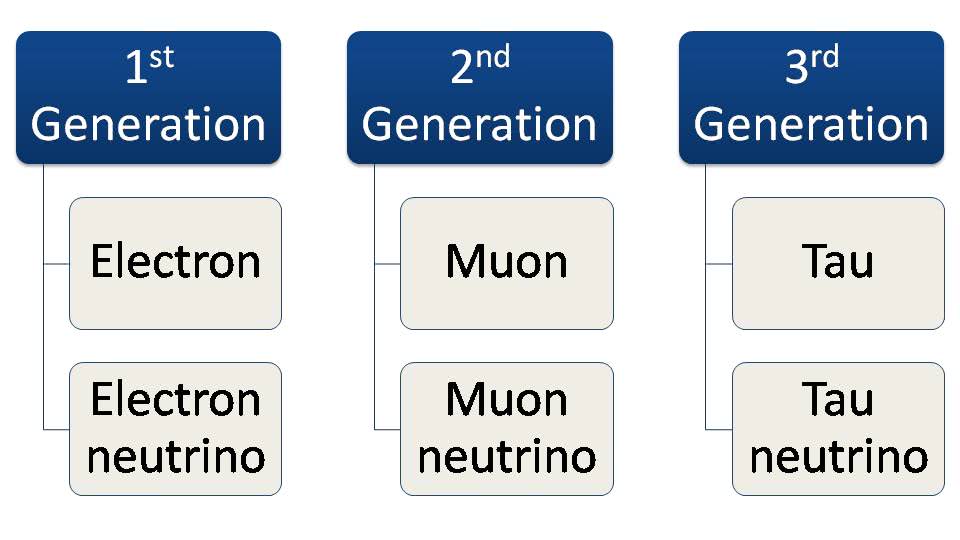Standard Model of Particle Physics: Everything that you observe is made of matter. And what is the matter made of? – atoms. Atoms are again made of other subatomic particles which we know as electrons, protons, and neutrons. But this is not the end of the story. Actually, proton and neutron both are made of something more fundamental called quarks. So, quarks are the elementary particles that make matter eventually, but it is not quarks alone that make matter but some others also. To simplify our understanding of all the existing fundamental particles The Standard Model of Particle Physics was proposed.
Trending: International Liquid Mirror Telescope
Table of Contents
What is The Standard Model of Particle Physics?
The Standard Model of elementary particles encapsulates all the elementary particles and three of the four known fundamental forces (gravity is not included in this model). Came into the picture in the early 1970s, the standard model is the most successful theory in physics. Two physicists namely, Abraham Pais and Sam Treiman are credited for the term “Standard Model”.
Know about the Fundamental States of Matter Here.
What Are Elementary Particles?
As defined in the Standard Model of particle physics, the particles that are not composed of other constituent particles or have no measurable internal structure are called elementary particles. These particles have been discovered through experiments and the latest particle in the list of elementary particles is the Higgs boson which was discovered in 2012.
Elementary particles are classified into different families and sub-families depending on their spin.
Particles that are made of elementary particles are called composite particles. Examples of composite particles include Mesons and Baryons.
Check List of States of Matter Here.
How Many Elementary Particles are There In Total?
According to The Standard Model of particle physics, to date, there are a total of 17 elementary particles that have been experimentally observed. These 17 fundamental particles are classified into 2 broad categories called fermions and bosons.

Latest News in S&T: Extraterrestrial Photosynthesis by Chang’E-5 lunar soil
What is Fermion?
In The Standard Model of fundamental particles, fermions are defined as fundamental matter particles that obey the Fermi-Dirac statistics (the Pauli Exclusion Principle). According to this, two identical fermions don’t occupy the same quantum number simultaneously.
Fermions have odd half-integral angular momentum (spin), like 1/2, 3/2, and so forth. For all the discovered fermions in the standard model, it is 1/2.
Fermions are again classified into quarks and leptons.
Know About Chain melted State of Matter Here.
What is Quark?
Quarks are elementary particles that combine to make composite particles called hadrons. The most common examples of stable hadrons are protons and neutrons.
Quark was discovered in SLAC National Accelerator Laboratory, California, in the year c. 1968. American physicist Murray Gell–Mann and Russian-American physicist George Zweig worked independently and are credited for the discovery of quarks.
There are a total of 6 types of quarks classified into 3 generations, each generation having a pair. The first generation quarks include UP and DOWN, the second-generation quarks include CHARM and STRANGE and the third generation quarks include TOP and BOTTOM.

UP (u), CHARM (c), and TOP (t) quarks have a charge of +2/3 e. On the other hand, DOWN (d), STRANGE (s), and BOTTOM (b) quarks have a charge of -1/3 e.
First-generation quarks are the lightest and most stable, the weight of quarks increases and stability decreases in the second and third generations.
Every quark has its own color and they combine in such a way to form colorless objects.
What Particles Are Hadrons?
Hadrons are nothing but subatomic composite particles that are made of 2 or more quarks. These quarks are held together by the force carriers. Famous examples of hadrons are protons and neutrons.
Types of Hadrons
Hadrons are of two types – Baryons and Mesons.
| Baryons | Mesons |
|---|---|
| composite subatomic particles having 3 quark particles | hadronic subatomic particles having a pair of quark and anti-quark |
| A type of fermion | A type of Boson |
| Half-Integer Spin | Integer Spin |
| participation in strong interaction | participation in weak & strong interaction |
| Example – proton, neutron | Example – electrons, neutrinos, photons |
Attempt World Telecommunication Day Quiz Now.
What is Lepton?
Leptons are the subatomic particles that also make up the matter like quarks but do not participate in strong intersections and are only affected by electromagnetic force, weak force, and gravitational force.
There are a total of 6 types of leptons in the standard model of particle physics. All these 6 types of leptons are classified into two classes – first class is known as Charged leptons (ELECTRON, MUON, TAU), which have a charge of -1e along with a sizable mass. and, the second class is known as Neutral leptons (ELECTRON neutrino, MUON neutrino, TAU neutrino), which has no charge along with little mass.

Electron is the well-known lepton that was discovered in 1897 by J. J. Thomson. In 1936 Carl D. Anderson discovered another kind of lepton called muon.
It should be noted that the color charge on leptons is zero.
What is Boson?
Bosons carry the energy and hence they are called energy carriers. Exchange of these force-carrier particles results in the three fundamental forces of nature. Every time a boson is transferred with it a discrete amount of energy is also transferred.
There are a total of 5 observed elementary bosons. Among these 4 (GLUON, PHOTON, W BOSON, Z BOSON) are called Gauge Bosons and the remaining one is a scalar boson called HIGGS BOSON.
Every boson is associated with a specific fundamental force.
- Gluon is responsible for the strong force
- Photon affects the electromagnetic force
- W and Z bosons mediate the weak force
A hypothetical particle called “Graviton” is theoretically responsible for gravity.
- Higgs boson gives mass to the particles like W and Z bosons and others.
Bosons follow Bose-Einstein statistics and because of this, bosons, unlike fermions, do not constitute matter. The simple meaning of obeying the Bose-Einstein statistics is that the two bosons can occupy the same place simultaneously.
Bosons have a whole number spin. For example, the well-known boson, the photon has a spin of 1.
Do Composite Bosons Exist?
Depending on the spin and statistics the hadrons, nuclei, and atoms can become composite bosons. A particle that contains an even number of fermions becomes a boson. For example, a meson is a boson because it contains one quark and one antiquark.
Now, before we conclude, here is the recap of the most important topics of this article – fermions and bosons.
Difference Between Fermions and Bosons
| Fermions | Bosons |
|---|---|
| Obeys Fermi-Dirac statistics | Obeys Bose-Einstein statistics |
| Considered as fundamental particles of matter | Considered as force carriers |
| Have half-integer spin | Have zero or integer spin |
| Composite fermions have an odd number of nucleons (at least 3 ) | Composite bosons have an even number of nucleons (at least 2) |
Standard Model of Particle Physics – Conclusion

This basic understanding of elementary particles will help you understand the complex concepts of physics. The Standard Model of particle physics is a very successful scientific theory in physics but this model also can not explain some of the questions, such as, why there are 3 generations of particles? What are dark matter and antimatter? What is a graviton? etc.
Standard Model of Particle Physics FAQs
Standard Model in Physics is the combination of two theories of particle physics into a single framework that describes all interactions of subatomic level particles, except those due to gravity.
The Standard Model of particle physics consisted of 17 elementary particles that have been experimentally observed.
These 17 fundamental particles in Standard Model are classified into 2 broad categories namely – fermions and bosons.
Higgs boson, which was discovered in 2012 is the latest one. It is related to associated with the Higgs field, a field that gives mass to other fundamental particles. Electron was the first elementary particle.
Abraham Pais and Sam Treiman gave this term in 1975.
What are you interested in?



5 Comments
Nikola Milovic · May 19, 2020 at 3:31 pm
This representation and description of matter does not correspond to the laws of nature, because science still does not know what matter is and what mass is, how and from what they are formed. Therefore, it is not known what gravity is and what electromagnetism is and how they arise and who causes them as phenomena in the entire universe.
Remember:
There must be a substance in the universe from which matter is formed, and that is Aether, who was rejected by unconscious science and therefore knows nothing about the origin and type of matter and the cause of the origin of gravity and magnetism. Explanations of the type of quarks, spin particles, the existence of bosons of various types, it does not correspond to what is found in nature.
When the organization of the universe and the role of Aether are understood, everything will be brought into harmony with the laws of nature.
Priyanka Garai · October 16, 2021 at 11:07 am
Very insightful post on elementary particles.
Suresh Kumar S · October 21, 2021 at 4:02 pm
We now have reasons to believe that we may have to go beyond the standard model. The bottom quark should decay to electrons and muons equally,though CERN experiments reveal a possible anomaly,since the decay is most probably not found to be equal.
This could be read along with the recently reported muon g-2 anomaly,where the wobble could possibly due to a new particle or field.
Is it possible that there is a supergravity electroweak field in operation.
Vaibhav patil · March 23, 2022 at 9:56 am
Superb very impressive post on the most anticipated topic of Physics – “the standard model”.
Dhananjay Diwan · July 29, 2022 at 6:35 am
Good article explaining the standard model. There needs to be a correction in the examples given under the section Types of Hadrons in the comparison table. Valid examples of Mesons are pi-mesons and keons. Whatever mentioned there are actually Leptons